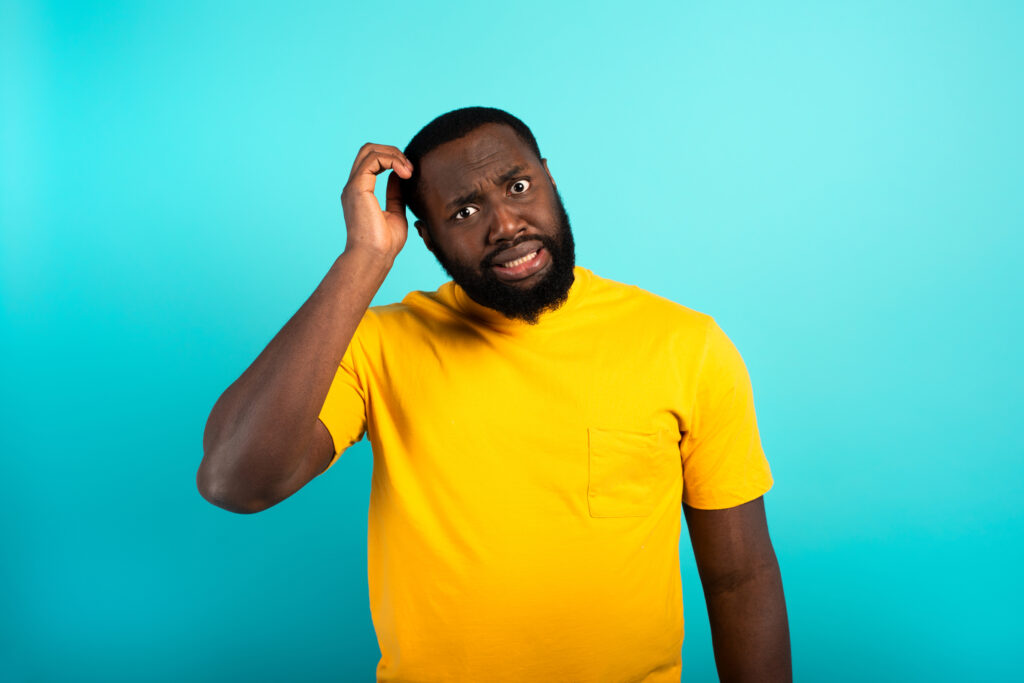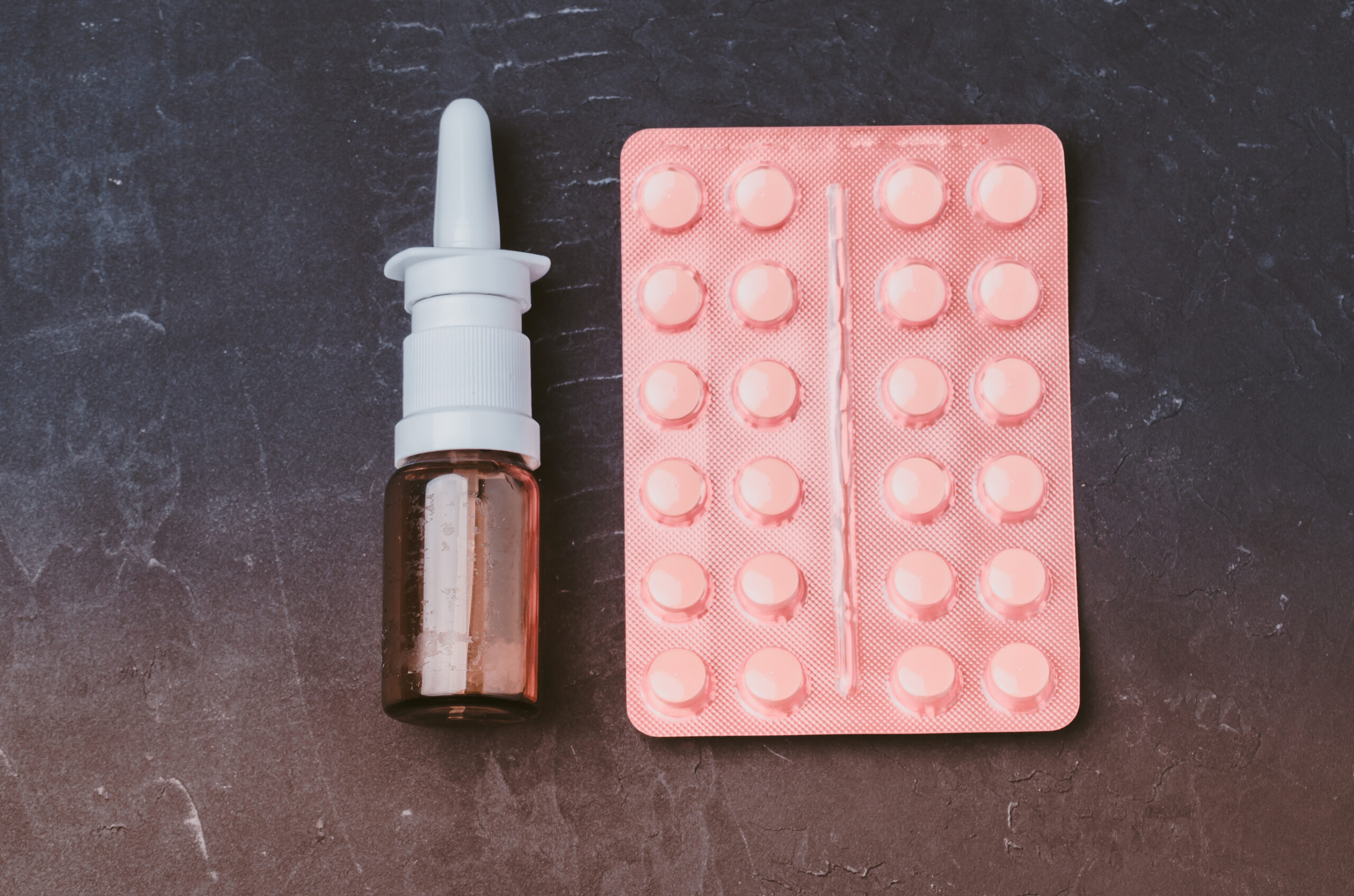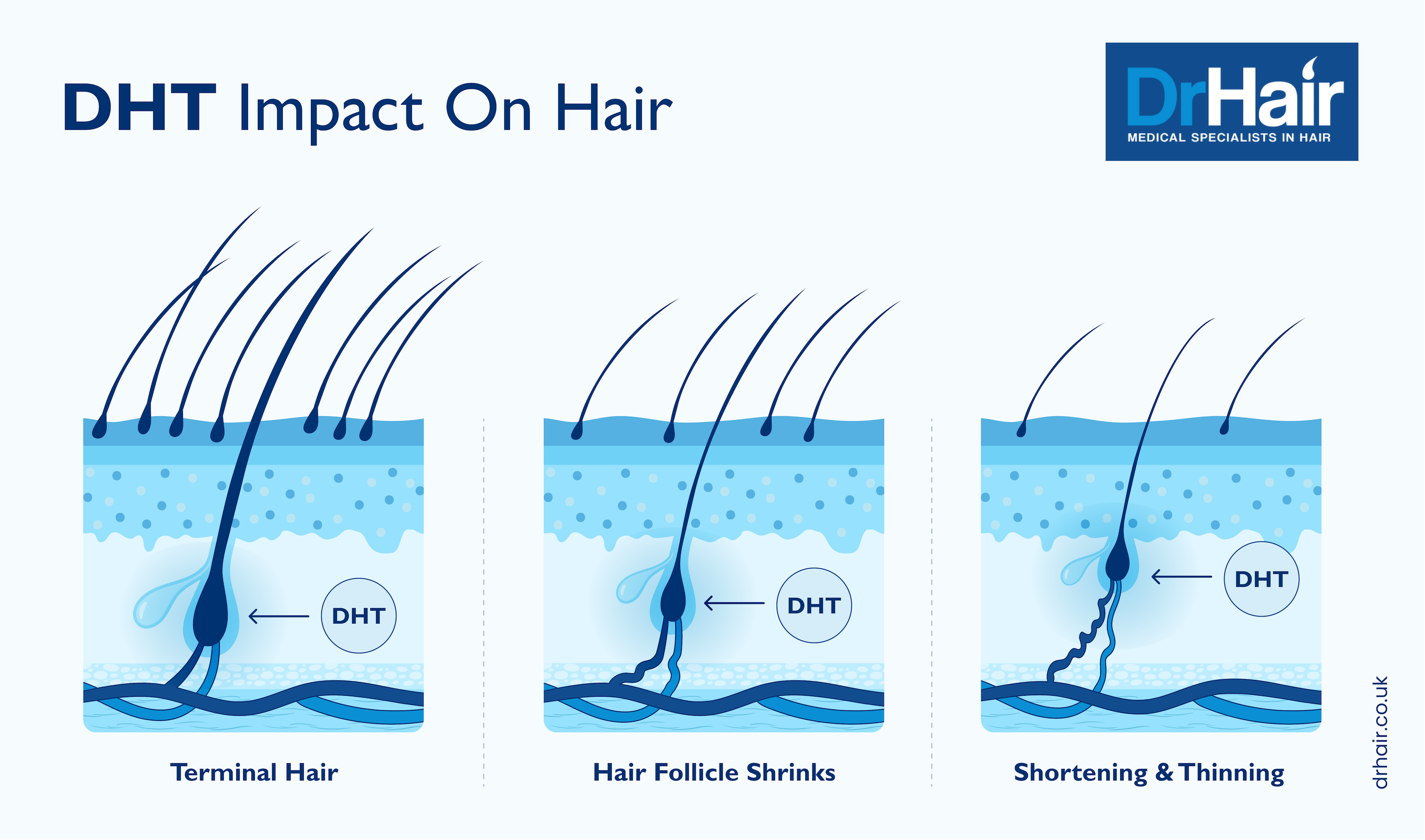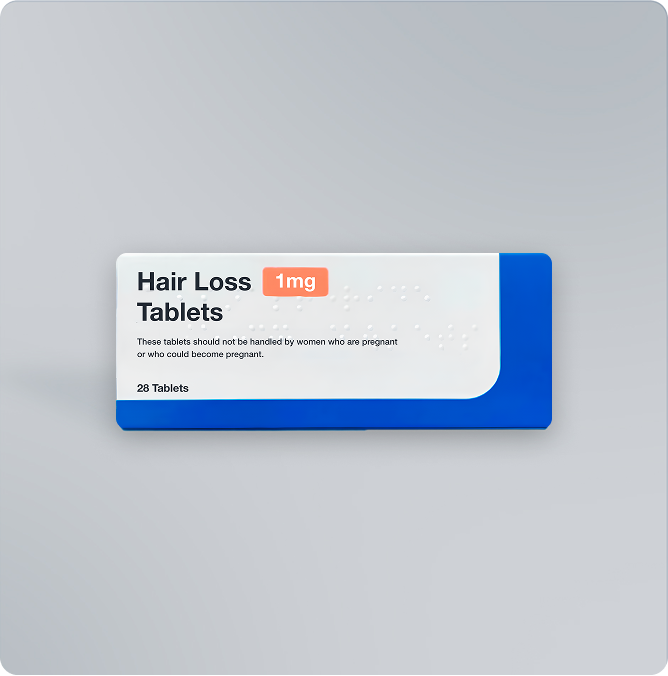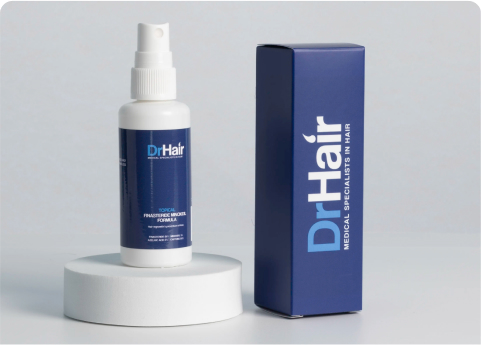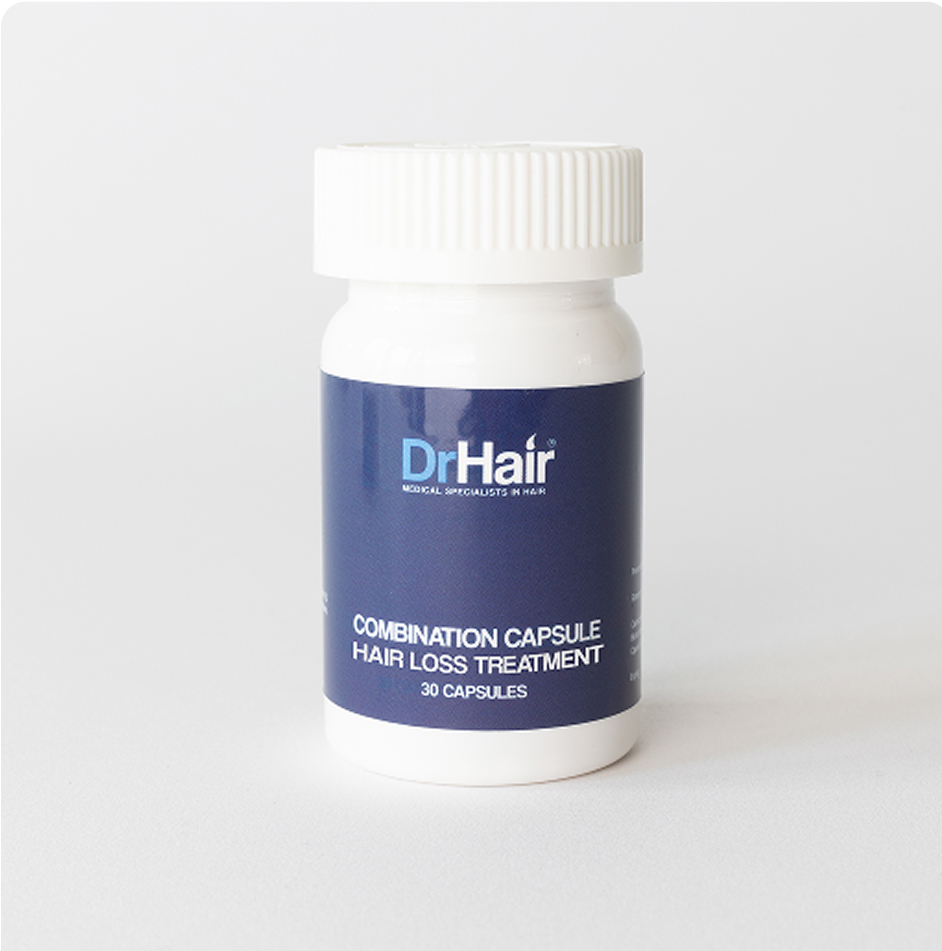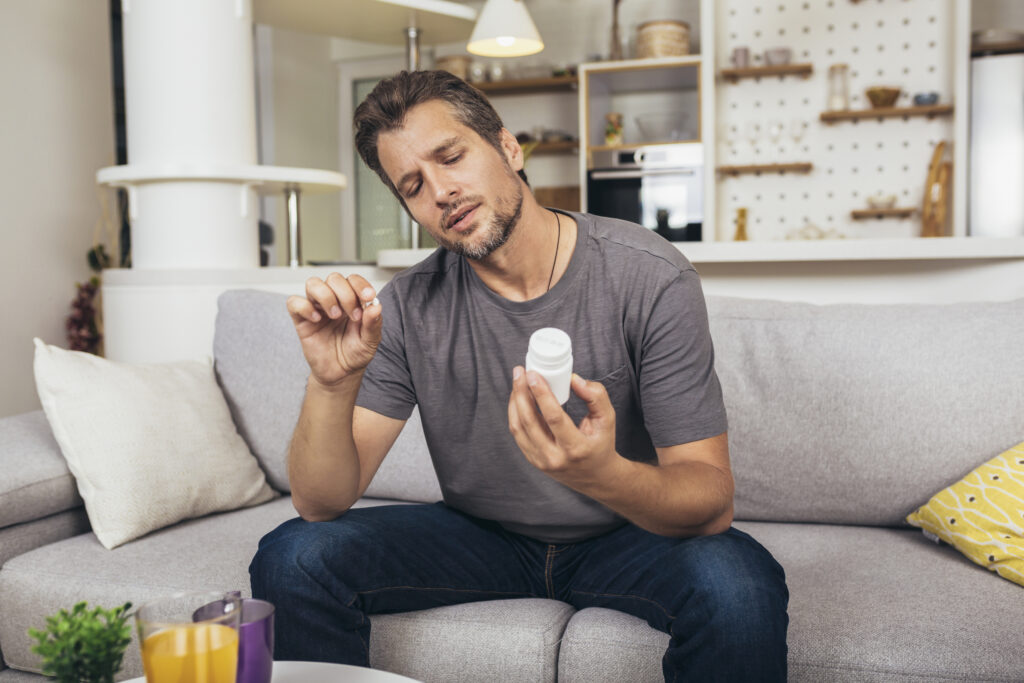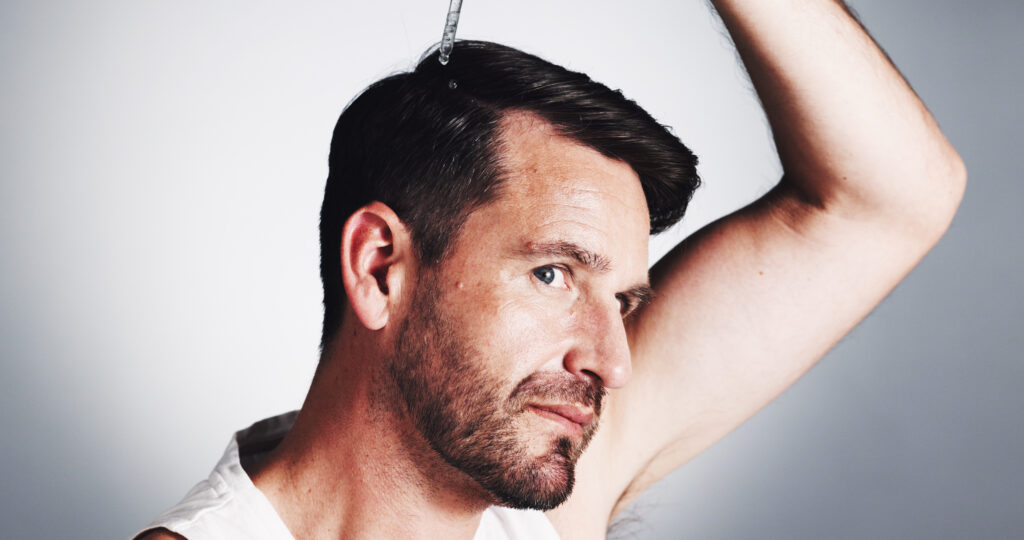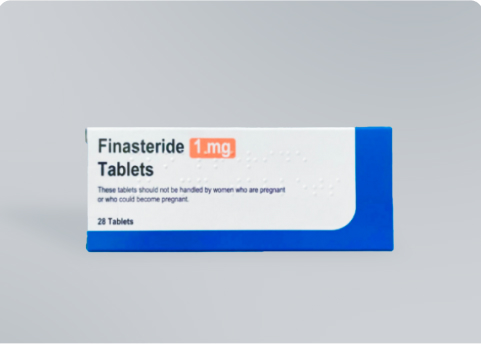Finasteride and minoxidil are the only two licensed treatments for male pattern baldness in the UK. But while both are safe and effective, they are very different medications in terms of how they work.
Oral finasteride is the most prescribed hair loss treatment worldwide, with almost 70% of hair transplant surgeons recommending it [1]. Topical minoxidil is a close second, recommended by 53% [1]. So which is best: finasteride vs minoxidil? And can you use both to get the best possible chances of regrowth?
Here, you’ll learn:
- Which is more effective, finasteride or minoxidil.
- The differences and similarities between minoxidil vs finasteride.
- How both treatments work.
- How finasteride differs from minoxidil in terms of side effects, results, and treatable conditions.
- The benefits of combining finasteride and minoxidil to treat male pattern baldness.
Table of Contents
- Which is more effective, finasteride or minoxidil?
- Key differences between finasteride vs minoxidil
- Similarities between finasteride & minoxidil
- How finasteride works
- How minoxidil works
- Finasteride vs minoxidil: side effects
- Finasteride vs minoxidil: effectiveness
- Finasteride vs minoxidil: treatable conditions
- The ultimate hair loss treatment: combining finasteride & minoxidil
Which is more effective, finasteride or minoxidil?
In general, studies show that finasteride is superior to minoxidil for treating male pattern baldness [2-5]. But ultimately you’re likely to get the best finasteride and minoxidil results when you combine them [5-6]. That’s because these treatments use different mechanisms to prevent hair loss and stimulate hair growth, so using both boosts your chances of visible regrowth.
Combination products like topical finasteride + minoxidil as well as oral finasteride + minoxidil products are ideal for those seeking the ultimate hair regrowth results.
Key differences between finasteride vs minoxidil
Here’s how finasteride differs from minoxidil:
- Mechanism — Finasteride affects your hormone levels, while minoxidil stimulates blood flow to the hair follicles. Learn more about how each treatment works below.
- Effectiveness — Studies show that finasteride tends to be more effective than minoxidil for treating male pattern baldness. However, unlike finasteride, minoxidil can also treat certain other types of hair loss.
- Side effects profile — Oral finasteride has more potentially significant side effects than minoxidil. However, side effects are usually mild and temporary with both treatments.
Similarities between finasteride & minoxidil
Finasteride and minoxidil are different medications, but there are some similarities between them:
- Licensing — Both finasteride and minoxidil are licensed to treat male pattern baldness in the UK.
- Best time to apply — Both treatments tend to be more effective the earlier they’re used. For best results, start using finasteride or minoxidil in the earlier stages of male pattern baldness.
How finasteride works
Finasteride belongs to a group of drugs called 5-alpha-reductase (5AR) inhibitors. It restricts the activity of the 5AR enzyme which converts testosterone to dihydrotestosterone (DHT), leading to lower DHT levels.
DHT is the primary hormone responsible for male pattern baldness. When your DHT levels are lower, less of this hormone can bind to receptors in your follicles and make them shrink.
Because finasteride affects your hormone levels, it may also lead to some unwanted finasteride side effects. Learn more about how finasteride works.
How minoxidil works
Minoxidil is a vasodilator, meaning it widens the blood vessels beneath the area of application. As your scalp blood vessels widen, they allow more nutrients and oxygen to flow to your follicles. This helps them produce healthy hair.
Because finasteride and minoxidil work in different ways, they can safely be used together to reduce hair loss and promote regrowth. Learn more about how minoxidil works.
Finasteride vs minoxidil: side effects
Because finasteride is normally taken orally to manage hair loss, it can produce systemic side effects. In rare cases, these effects can impact your day-to-day life. But most finasteride users don’t experience side effects; one large scale study found that less than 1% of finasteride users had adverse reactions to the drug [7].
Minoxidil, meanwhile, is a topical treatment, so it’s far less likely to create serious side effects. Most side effects are mild and short-lived.
Here are the main side effects of minoxidil vs finasteride:
Minoxidil side effects | Finasteride side effects |
Skin irritation Redness Rash Itchiness Temporary hair shedding | Temporary hair shedding Reduced libido Erectile or ejaculation dysfunction Mood changes (including depression) Weight gain Allergic reactions |
Some men avoid taking finasteride due to the risk of side effects, and it is important to weigh these up against the potential benefits. But the chances of experiencing finasteride side effects are low, and there are several ways to reduce the side effects of finasteride.
Finasteride vs minoxidil: effectiveness
Multiple studies have shown finasteride to be more effective than minoxidil for treating male pattern baldness [2-5]. A comparative study found that finasteride increased hair density in 80% of patients, while minoxidil achieved the same in 52% of patients [2].
These images from clinical studies demonstrate the effectiveness of each treatment:
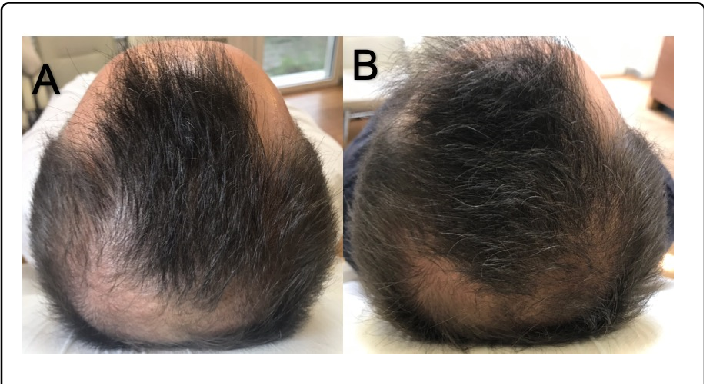
Before (A) and after (B) 24 weeks of 5% minoxidil treatment. Source: [8]
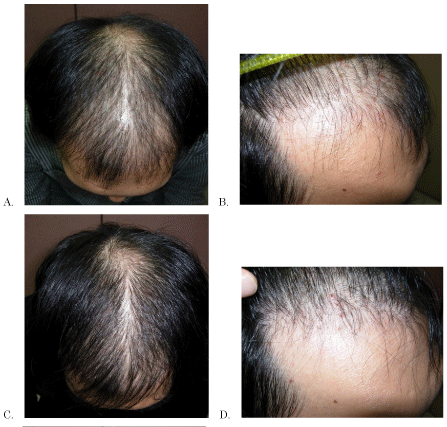
Before (A, B) and after (C, D) 24 weeks of 1mg finasteride treatment. Source: [9]
Your individual success with either minoxidil or finasteride is likely to depend on the extent of your hair loss and when you started losing your hair. If you’ve recently started going bald, both treatments are more likely to be effective than if you have more established hair loss. Learn more about whether finasteride works for hair loss.
Finasteride vs minoxidil: treatable conditions
While finasteride is only useful for treating male pattern baldness, minoxidil can help with a range of other hair loss conditions. These include:
- Female pattern hair loss — A type of inherited hair loss that affects women.
- Alopecia areata — An autoimmune disorder resulting in the development of round bald patches on the scalp.
- Telogen effluvium — A type of hair loss resulting from extreme or chronic stress, as well as childbirth, certain medications, and other factors. Telogen effluvium is usually temporary.
- Traction alopecia — Hair loss resulting from overly tight hairstyles and extensions.
Minoxidil is only available off-label for each of these conditions, so seek advice from a trichologist before you use it. Alternatively, book a consultation with our specialist team.
The ultimate hair loss treatment: combining finasteride & minoxidil
Using finasteride and minoxidil together can increase your chances of successful regrowth using medical therapy alone. Finasteride addresses the underlying hormonal cause of male pattern baldness, while minoxidil optimises the amount of nutrients fed to your follicles. This leads to further reduced hair loss and a higher chance of regrowth.
At DrHair, you can get finasteride and minoxidil in any combination you require. Ready to try both for optimal results? We offer oral finasteride and topical minoxidil at the best price. And if you’re concerned about the risk of systemic side effects, choose topical finasteride with minoxidil to minimise these.
You can also get finasteride or minoxidil individually, either as a one-off purchase or on subscription. Our flexible purchase options and best price guarantee ensure all men can help tackle their hair loss. See all our hair loss products to learn more.


